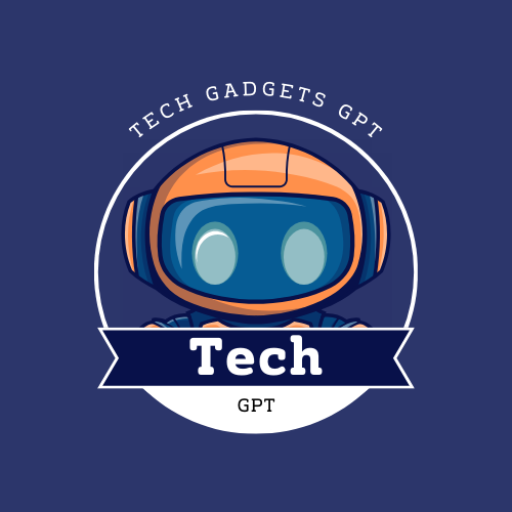Data annotation tech assessment is a process used to evaluate the quality and effectiveness of data labeling for machine learning and artificial intelligence (AI) systems. It ensures that datasets are accurately annotated to improve the performance of AI models. This guide breaks down the essentials of data annotation, highlights its importance, and provides actionable insights to help you excel in this field.
Why is Data Annotation Important for AI?
Data annotation is the foundation of AI and machine learning. Without accurately labeled data, AI models cannot learn or make reliable predictions. Here’s why data annotation matters:
- Enhanced Accuracy: Well-annotated data helps AI models make better decisions and predictions.
- Reduced Errors: Consistent and thorough annotation reduces the risk of biases and errors in AI outputs.
- Improved Model Performance: Properly assessed data annotations ensure that machine learning models are trained with high-quality data, leading to better outcomes.
Data annotation tech assessment evaluates the methods and tools used to label data, ensuring they meet the desired standards and align with the specific needs of AI projects.
H2: Key Techniques for Data Annotation
Manual Data Annotation
Manual annotation involves human experts labeling data based on specific guidelines. It’s best for:
- Complex tasks like medical imaging or sentiment analysis.
- Ensuring high accuracy through domain expertise.
While reliable, this approach is time-intensive and requires skilled annotators to maintain quality.
Automated Annotation Tools
Automated annotation tools use algorithms to label data quickly. These tools are ideal for:
- Large datasets that require scalability.
- Repetitive tasks that benefit from automation.
However, automated tools must be carefully monitored to avoid inaccuracies, making tech assessments crucial.
Addressing Pain Points in Data Annotation Tech Assessment
Managing Large Datasets
Handling vast amounts of data can be overwhelming. The solution lies in:
- Efficient Tools: Choose platforms that support high-volume data management.
- Team Collaboration: Encourage clear communication among annotators to streamline workflows.
Ensuring Annotation Consistency
Inconsistent annotations can compromise AI model performance. Overcome this challenge by:
- Developing detailed annotation guidelines.
- Regularly reviewing annotations to ensure uniformity.
Cost vs. Quality
High-quality annotations often come at a cost. To balance this:
- Use a mix of manual and automated techniques.
- Invest in tools that offer scalable solutions without sacrificing quality.
Competitor Insights on Data Annotation Tech Assessment
24×7 Offshoring
This company provides scalable data annotation solutions tailored for businesses. Their focus on quick delivery and reliable outcomes makes them a strong competitor.
Scribd’s Interview Guide
Scribd offers a detailed resource on data annotation, including 20 key interview questions. This highlights the importance of combining practical knowledge with theoretical insights during assessments.
Tools and Technologies for Efficient Data Annotation
The right tools can streamline data annotation processes. Here are some popular options:
- Labelbox: A platform that supports collaborative annotation and project management.
- SuperAnnotate: Offers an intuitive interface and features to enhance workflow efficiency.
- Amazon SageMaker Ground Truth: Combines manual and automated annotation for high-volume tasks, making it ideal for large-scale projects.
How to Conduct a Successful Data Annotation Tech Assessment
- Define Clear Objectives: Outline what the AI project requires from annotated data.
- Select the Right Tools: Choose annotation tools that align with project goals and scale requirements.
- Establish Quality Standards: Create clear guidelines to ensure consistency and accuracy.
- Monitor Progress: Regularly assess annotations to identify and resolve issues promptly.
Optimizing Keywords for Data Annotation Tech Assessment
Keywords play a pivotal role in enhancing the visibility of your content. For “data annotation tech assessment,” focus on:
- Long-Tail Keywords: Use phrases like “best practices for data annotation tech assessment” or “tools for efficient data annotation tech assessment” to attract specific search intent.
- Related Terms: Incorporate terms such as “data labeling tools,” “AI data preparation,” and “machine learning dataset annotation” in subheadings and content.
- Keyword Placement: Ensure the primary keyword appears naturally in the title, introduction, headings, and meta description without overstuffing.
Optimizing these keywords will improve search rankings and ensure your blog meets the needs of users seeking actionable insights.
Conclusion
Data annotation tech assessment is a vital step in creating high-quality datasets for AI and machine learning projects. By addressing key pain points, leveraging competitor insights, and using advanced tools, you can optimize your annotation process. Additionally, incorporating strategically placed keywords like “data annotation tech assessment” ensures your content ranks higher on search engines, reaching the right audience.
Start implementing these strategies today to achieve unparalleled success in your data annotation endeavors.






[…] annotations are the foundation of reliable AI models. The data annotation starter assessment ensures contributors can meet the quality standards required for producing datasets that fuel […]
equilibrador
Equipos de balanceo: importante para el operación fluido y eficiente de las maquinarias.
En el entorno de la ciencia moderna, donde la efectividad y la fiabilidad del dispositivo son de gran trascendencia, los aparatos de calibración desempeñan un rol fundamental. Estos equipos especializados están desarrollados para equilibrar y regular componentes dinámicas, ya sea en herramientas manufacturera, transportes de traslado o incluso en aparatos domésticos.
Para los técnicos en reparación de equipos y los especialistas, utilizar con dispositivos de balanceo es crucial para garantizar el rendimiento uniforme y confiable de cualquier dispositivo rotativo. Gracias a estas opciones avanzadas avanzadas, es posible disminuir notablemente las oscilaciones, el zumbido y la tensión sobre los rodamientos, prolongando la duración de piezas caros.
Igualmente relevante es el papel que tienen los sistemas de ajuste en la servicio al comprador. El apoyo especializado y el mantenimiento continuo usando estos sistemas posibilitan brindar prestaciones de óptima excelencia, aumentando la satisfacción de los clientes.
Para los responsables de emprendimientos, la aporte en equipos de ajuste y medidores puede ser importante para aumentar la efectividad y eficiencia de sus sistemas. Esto es especialmente significativo para los dueños de negocios que gestionan pequeñas y pequeñas emprendimientos, donde cada elemento es relevante.
También, los equipos de calibración tienen una vasta utilización en el sector de la seguridad y el gestión de calidad. Facilitan localizar eventuales problemas, previniendo reparaciones costosas y problemas a los sistemas. También, los datos recopilados de estos sistemas pueden aplicarse para optimizar procesos y potenciar la reconocimiento en buscadores de consulta.
Las zonas de utilización de los dispositivos de equilibrado comprenden numerosas áreas, desde la producción de ciclos hasta el control ecológico. No interesa si se habla de extensas producciones industriales o modestos talleres caseros, los equipos de ajuste son indispensables para proteger un operación efectivo y libre de fallos.
El Equilibrado de Piezas: Clave para un Funcionamiento Eficiente
¿ Has percibido alguna vez temblores inusuales en un equipo industrial? ¿O sonidos fuera de lo común? Muchas veces, el problema está en algo tan básico como una irregularidad en un componente giratorio . Y créeme, ignorarlo puede costarte caro .
El equilibrado de piezas es un paso esencial en la construcción y conservación de maquinaria agrícola, ejes, volantes y elementos de motores eléctricos. Su objetivo es claro: evitar vibraciones innecesarias que pueden causar daños serios a largo plazo .
¿Por qué es tan importante equilibrar las piezas?
Imagina que tu coche tiene una rueda desequilibrada . Al acelerar, empiezan las vibraciones, el volante tiembla, e incluso puedes sentir incomodidad al conducir . En maquinaria industrial ocurre algo similar, pero con consecuencias aún peores :
Aumento del desgaste en bearings y ejes giratorios
Sobrecalentamiento de elementos sensibles
Riesgo de colapsos inesperados
Paradas sin programar seguidas de gastos elevados
En resumen: si no se corrige a tiempo, un pequeño desequilibrio puede convertirse en un gran dolor de cabeza .
Métodos de equilibrado: cuál elegir
No todos los casos son iguales. Dependiendo del tipo de pieza y su uso, se aplican distintas técnicas:
Equilibrado dinámico
Perfecto para elementos que operan a velocidades altas, tales como ejes o rotores . Se realiza en máquinas especializadas que detectan el desequilibrio en varios niveles simultáneos. Es el método más preciso para garantizar un funcionamiento suave .
Equilibrado estático
Se usa principalmente en piezas como neumáticos, discos o volantes de inercia. Aquí solo se corrige el peso excesivo en una única dirección. Es rápido, sencillo y eficaz para ciertos tipos de maquinaria .
Corrección del desequilibrio: cómo se hace
Taladrado selectivo: se quita peso en el punto sobrecargado
Colocación de contrapesos: tal como en neumáticos o perfiles de poleas
Ajuste de masas: habitual en ejes de motor y partes relevantes
Equipos profesionales para detectar y corregir vibraciones
Para hacer un diagnóstico certero, necesitas herramientas precisas. Hoy en día hay opciones económicas pero potentes, tales como:
✅ Balanset-1A — Tu asistente móvil para analizar y corregir oscilaciones